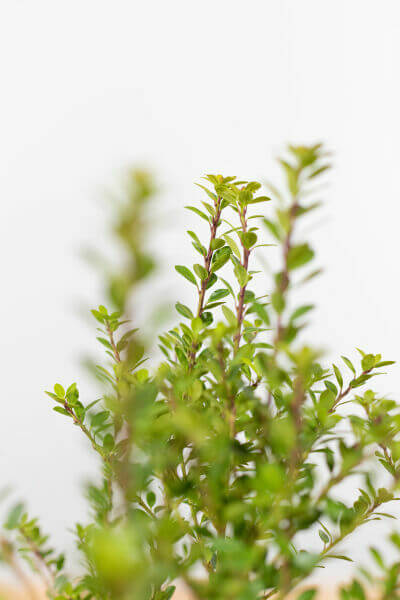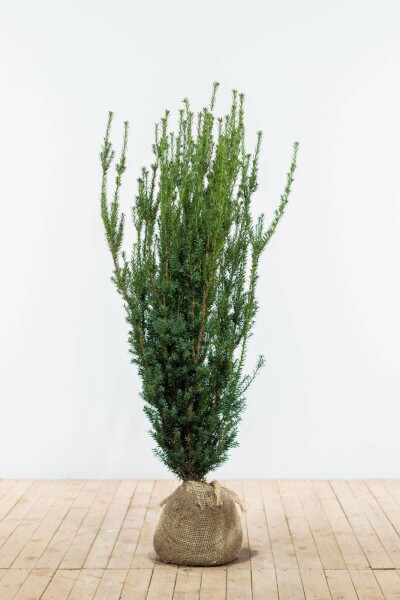Hedge Plants For Seaside Gardens
Hedge Plants For Seaside Gardens
Blog Article
Hedge Plants For Summer Blooms
Enhance your garden's allure with lavish hedge ranges such as Yew (Taxus), Thuja, Laurel, Photinia, and Bamboo, commemorated for their structural stability and environmental advantages.
Yew and Thuja provide evergreen protection and winter strength, while Laurel offers fast development and broad, fragrant leaves.
Photinia includes seasonal beauty with its vibrant red foliage, and Bamboo provides a low-maintenance, tranquil ambiance.
These hedges enhance air quality, reduce noise, and develop tranquil, private spaces.
Correct planting, spacing, and maintenance ensure vigorous development and ecological consistency.
Explore how these rich varieties can raise your garden's appeal and well-being.
Key Takeaways
Change Your Garden With Lush Hedge Ranges
- Select Yew for its thick, evergreen development and unrivaled longevity.
- Select Laurel for its quick growth and broad leaves, guaranteeing fast personal privacy.
- Pick Photinia for its lively seasonal foliage, which turns a striking dark red.
- Utilize Bamboo for a low-maintenance, winter-hardy hedge with aesthetic appeal.
- Space plants 2-3 per meter and prune regularly for optimal growth and health.
Popular Hedge Plants
When transforming a garden with lush hedge varieties, it's important to consider popular hedge plants such as Yew, Thuja, Laurel, and Photinia due to their distinct qualities and benefits.
Yew (Taxus) is highly esteemed for its longevity and dense, green growth, making it a prime option for withstanding landscapes.
Thuja is kept in mind for its evergreen foliage and robust winter durability.
Photinia adds seasonal vibrancy with red leaves that darken in time, creating dynamic visual appeal.
Laurel offers quick development and aromatic, broad leaves, suitable for quick privacy.
Furthermore, Bamboo is an exceptional option for ambiance, offering a low-maintenance, winter-hardy choice that enhances the garden's aesthetic with its elegant, swaying canes.
These choices deal with a range of horticultural needs and preferences.
Advantages of Garden Hedges
Garden hedges use a wide range of benefits, making them an important addition to any landscape. These natural barriers are cost-efficient to execute and provide substantial wind security, boosting air blood circulation and adding to noise decrease. The thick foliage of hedges like Thuja and Beech guarantees personal privacy by blocking visibility, developing a remote and serene environment.
Hedges likewise play an important role in microclimate policy, providing a steady environment that fosters plant development and reduces temperature level changes. Their intricate leaf structures filter contaminants, improving air quality and contributing to a much healthier garden environment.
Furthermore, hedges excel in noise decrease, absorbing and deflecting acoustic waves to lower ambient noise levels. This double performance of offering both acoustic and visual personal privacy enhances the general tranquility and aesthetic appeal of any garden.
Planting and Maintenance Tips
For a successful hedge, meticulous preparation of the planting location is important. Ensure the soil has proper pH and drainage to support strong root advancement.
Space the plants properly for the picked species. Water the hedge frequently throughout its preliminary growth phase, adjusting as required with seasonal modifications.
Carry out a systematic insect control and disease avoidance technique, utilizing chemical or organic treatments when needed. Routinely examine for aphids, mites, and fungal infections.
Apply mulch to maintain moisture and suppress weeds. Seasonal pruning promotes thick growth and air flow, necessary for plant health.
Following these standards will assist you cultivate a vibrant, well-kept hedge that boosts the appeal of your garden.
Spacing and Trimming Guidelines
Spacing and Trimming Standards
Correct spacing and cutting are crucial for cultivating healthy, visually appealing hedges. Adequate spacing ensures each plant receives adequate nutrients, light, and air flow.
Follow these standards for ideal hedge upkeep:
- Spacing: Position hedge plants 2-3 plants per meter to encourage robust growth.
- Pruning Methods: Regular pruning is important for preserving preferred hedge height and shape. Trim new development in summer season and cut down older wood throughout winter season.
- Seasonal Care: Adjust trimming schedules and methods according to seasonal requirements to ensure plant health.
- Hedge Height: Frequently display and cut to keep the preferred hedge height and accomplish uniform aesthetics.
Sticking to these steps will guarantee your hedge grows, boosting both the appeal and performance of your garden.
Selecting the Right Hedge
Selecting the Right Hedge
Choosing the appropriate hedge includes examining aspects such as mature height, foliage density, and environmental strength. Successful hedge plant choice needs understanding each species' development qualities and site-specific adaptability.
For instance, Yew website (Taxus) provides excellent durability and thick growth, while Thuja is noteworthy for its winter strength. Furthermore, considering upkeep requirements is essential; fast-growing types like Laurel or Privet demand routine trimming, whereas low-maintenance choices like Bamboo or Ivy might be more effective for those seeking minimal maintenance.
Environmental factors such as soil type, light accessibility, and wetness conditions must likewise assist the choice process. This cautious technique ensures the selected hedges will grow, providing both practical and visual advantages to the garden landscape.
Shipment and Planting Suggestions
To ensure your hedge plants thrive, they ought to be delivered by specialized couriers and planted immediately upon arrival.
Follow these vital actions for effective planting:
- Soil Preparation: Enrich the soil with raw material to improve drainage and nutrient content.
- Planting Depth: Produce a trench twice the width and equivalent to the depth of the root ball.
- Watering Techniques: Water thoroughly after planting, keeping the soil regularly moist but not saturated.
- Mulching: Use a layer of mulch to maintain moisture and reduce weeds.
Consumer Support and Service
Given the crucial role of prompt help in horticultural pursuits, our client support team is available 6 days a week through telephone, e-mail, and social networks to use skilled suggestions and quickly deal with any concerns. Their devotion to fast reaction times ensures customer complete satisfaction by dealing with queries connected to plant health, optimum planting techniques, and maintenance schedules.

-------------------
Social Media
This thorough support group, enhanced by an outstanding 9.3/ 10 client rating, highlights our dedication to boosting the gardening experience for each client.
Frequently Asked Concerns
For How Long Does It Consider Hedge Plants to Establish?
Hedge plants generally need one to three years to become fully developed, with the precise duration differing by species and growing conditions.
Effective care throughout this crucial period is vital for robust growth. Consistent watering, alert weed control, and appropriate fertilizer application are essential in promoting strong root development.
For example, fast-growing species like Laurel might establish quicker, while slower-growing ranges such as Yew might take longer. Diligent upkeep speeds up the establishment process, leading to healthy and thick hedges.
What Are the very best Hedge Plants for Personal Privacy?
The question of the finest hedge plants for privacy includes assessing evergreen and deciduous options.
Evergreen hedges like Thuja, Laurel, and Cypress offer year-round protection, ensuring continuous personal privacy.
On the other hand, deciduous hedges such as Beech use seasonal privacy, shedding leaves in chillier months.
Secret maintenance suggestions for privacy hedges include routine trimming, fertilizing in spring, and appropriate spacing-- typically 2 to 3 plants per meter.
Furthermore, constant watering and diligent weed removal are important for promoting healthy, thick growth.
Can Hedge Plants Draw In Wildlife to My Garden?
Yes, hedge plants can bring in wildlife to your garden by supplying essential benefits like shelter, food, and nesting websites, thereby enhancing local biodiversity. For example, yew, holly, and laurel are excellent for attracting birds, while ivy supports a variety of bugs.
However, it's important to note that there are some disadvantages, such as increased maintenance to handle insects and routine maintenance. Thoroughly selecting and preserving hedge ranges can assist balance these downsides and advantages, ultimately cultivating a dynamic and sustainable community in your garden.
Exist Any Flowering Hedge Plants Available?
Yes, there are flowering hedge plants offered that can boost the beauty of your garden.
For example, Elaeagnus, also called Olive Willow, produces fragrant white flowers in the fall, including a touch of elegance.
Photinia, another popular choice, showcases dynamic red leaves that grow into an abundant green, creating a dynamic visual impact throughout the seasons.
To make sure these plants thrive, it's necessary to practice appropriate pruning strategies and seasonal upkeep, such as trimming new growth in the summertime and cutting down in the winter season.
These procedures will assist keep the health and visual appeal of your blooming hedges.
How Do I Avoid Bugs in My Hedge Plants?
To avoid pests in hedge plants, employ natural pest control methods and maintain proper hedge care. Introduce advantageous insects like ladybugs, which take advantage of hazardous pests, to create a balanced ecosystem.
Regularly inspect your hedges for signs of invasion and immediately eliminate any affected parts to prevent the spread. Ensure the health of your hedges by applying well balanced fertilizers and supplying appropriate water.
Use mulching to keep soil moisture and proper spacing to lower plant tension and promote robust growth. These practices collectively assist in decreasing pest concerns and maintaining a healthy hedge.
Conclusion
In essence, choosing the ideal hedge ranges such as Yew, Thuja, and Laurel can change any garden into a relaxing haven. These plants provide year-round plant, boost aesthetic appeal, and offer useful advantages like sound decrease and wind defense.
Appropriate planting methods, accurate spacing, consistent watering, and seasonal cutting are essential for ideal development.
Trusted shipment services and professional customer assistance guarantee a smooth experience from purchase to planting, making it easier than ever to elevate your outside area.
Garden hedges provide a wide range of advantages, making them a valuable addition to any landscape. These natural barriers are affordable to execute and provide considerable wind protection, improving air circulation and contributing to sound reduction. The dense foliage of hedges like Thuja and Beech makes sure privacy by blocking visibility, developing a serene and remote environment.

Pruning Methods: Regular pruning is important for maintaining wanted hedge height and shape. Trim new development in summertime and cut back older wood during winter season.
Report this page